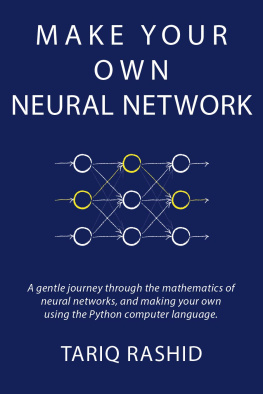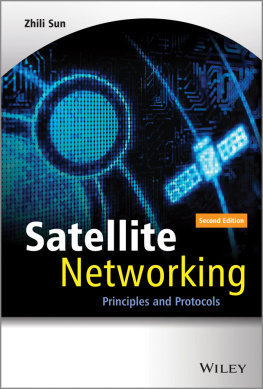This publication is in copyright. Subject to statutory exception and to the provision of relevant collective licensing agreements, no reproduction of any part may take place without the written permission of EdWiser Scholastic Press.
Networks Illustrated
Are you curious about the social and technological networks that shape our lives, like Amazon, the Internet, and WiFi? But are you worried about a Calculus or Linear Algebra prerequisite that typically comes along with such courses? If so, then this book is for you. You will learn the key principles behind the networks that surround us every day, such as sharing is hard and crowds are wise, and you will see how these simple principles are reflected in how these networks operate. Plus, all the mathematics you need is adding and multiplying numbers, as this book relies on pictures, anecdotes, and analogies as instructional tools.
This book can also be used for an introductory course in college or high school, offered to those interested in networking from any majors and disciplines. Instructional resources, including lecture videos and slides, as well as comprehensive questions for homework assignments, can found at the continuously updated course website www.networksillustrated.org , or by emailing the authors at networksillustrated@gmail.com .
Christopher Brinton is a Ph.D. Candidate in the Department of Electrical Engineering at Princeton University. He received his Masters Degree in EE from Princeton in May 2013, and his BSEE from The College of New Jersey (summa cum laude) in May 2011. He is a co-instructor for the MOOC based on this book.
Mung Chiang is a Professor of Electrical Engineering at Princeton University and the Director of Princeton EDGE Lab that has commercialized several technologies. His research on networking receives the Waterman Award and the IEEE Tomiyasu Award, his education activities received the ASEE Terman Award, and his inventions received a TR35 Award.
Its broad coverage of network technology and algorithms, with lucid examples and diagrams, make this text the quintessential network primer.
Keith Cambron , author of Global Networks and former President of AT&T Labs.
Networks Illustrated is the definitive book about networks. It is an intelligent, comprehensive overview of the networks that shape our lives: social networks, crowd-based networks, auction-based networks, cellular networks, and the Internet, the network of networks. This is a must read for anyone who wants to understand how these networks operate and attempt to serve the greater good.
Lynda Clarizio , former President of Advertising.com
To Mom, Dad, Eric, and Kate
Christopher Brinton
To Novia and Augustan
Mung Chiang
Contents
The motivation to write this book has an interesting story, bringing us back to September of 2012. At that time, co-author Mung had just published his first textbook, Networked Life: 20 Questions and Answers, using the just-in-time, case-study-based pedagogical approach, and written in a language geared towards junior or senior level undergraduates in science and engineering.
Subsequently, we began to offer the corresponding course, Networks: Friends, Money, and Bytes, during the Fall 2012 semester, as a Massive Open Online Course (MOOC). The Princeton students had the opportunity to experience a flipped classroom where the homework becomes watching the lectures and the class time is used for discussion while online students were able to get course content for free online.
Driven by intellectual curiosity rather than a certificate or practical skills for a new job, over 65,000 people enrolled. But as the course progressed, we were getting emails, posts on the discussion forums, and Facebook messages from people saying they didnt have the mathematical prerequisite of multivariable calculus and linear algebra. They had either never before seen vectors, matrices, derivatives and so on, or didnt care to see it.
So we began thinking, can we explain this material without using all the equations in the Long Answer section of the Networked Life textbook? How much do you really have to know about eigenvalues and eigenvectors to get the gist of PageRank? Do we really have to take derivatives to explain the notions of supply and demand that underly data pricing?
As we thought more, we realized that we could teach the fundamentals of networking using math that is not much more complicated than 2 + 3 = 5, as long as there are sufficient pictures, analogies, and anecdotes to compliment the text. And that lead us to write this book, which explains the social and technological networks that surround us each day by focusing on 8 principles. We still wanted this book to be more detailed than a popular science text, while keeping it at a level such that anyone with middle school mathematics can access the material.
Now, what are those principles? They are simple phrases that summarize a wide range of ideas behind networks:
- Sharing is hard.
Whether youre making a phone call or connecting to the Internet on WiFi, you have to share the network media (e.g., the air) that youre using with many other people. We will look at the techniques that have been designed to allocate the networks resources fairly.
- Consensus is hard.
Many websites today have to resolve large banks of raw data to find a consensus. This could take the form of allocating ad spaces from bids, ranking web pages from relationships between pages, or resolving disputes when conflicts of opinion arise. Such tasks become increasingly convoluted as the size of the input increases.
- Crowds are wise.
Today, online retail and rental businesses commonly allow customers to rate the items they purchase. We can leverage the opinions of large crowds of ratings to make product ranking and recommendation more accurate and useful. But we have to make certain assumptions about the way the ratings were made in the first place.
- Crowds are not so wise.
Unfortunately, the assumptions we need to make about crowds in order for their opinions to be useful are not always valid. For instance, on social networks like Facebook or YouTube, many people can readily be influenced to watch videos or purchase products, since they will naturally follow either the crowd or the influential members of the community.
- Network is expensive.
Our behavior in networks is often driven by prices, shaped by the balance between demand and supply. We will look at reasons why usage-based pricing sends more useful pricing signals to customers.
- Network of networks.
The Internet itself is a huge, ubiquitous network that is comprised of many inter-connected networks. We will first look at the principles of packet switching, and then how the Internet routes packets from one location to another.
- Layers on layers.
One of the fundamental principles behind the Internets architecture is the notion of layering. These layers range from the physical media over which our data flows, to the applications that we run on our smart phones. We will see how load is controlled and multicast is achieved in some of these layers.







